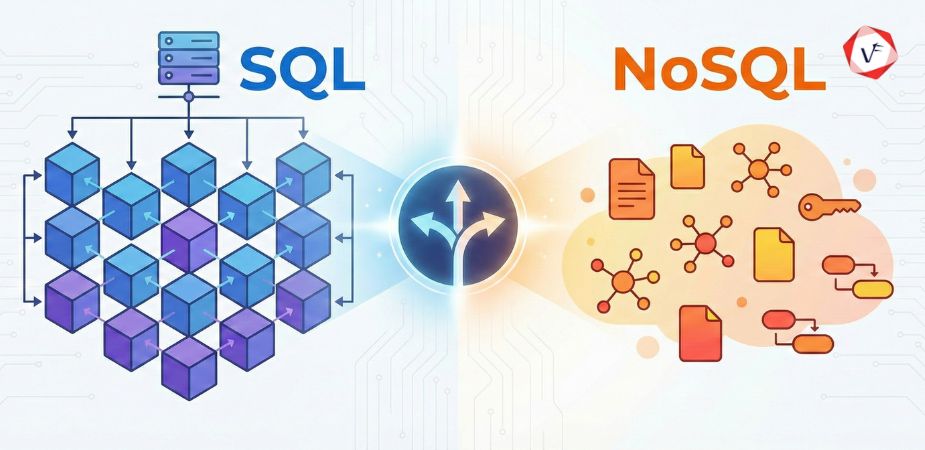- May 11, 2023 6:01 am
- by Aruthra
- May 11, 2023 6:01 am
- by Aruthra

The emergence of smartphones presented businesses with a novel opportunity to interact with their customers in an efficient manner by creating applications. Apps gained popularity because they allowed users to engage with businesses from anywhere, at any time, using any device. However, as time passed, apps became less engaging, and businesses began to lose customers at an alarming rate. As a result, customer retention rates decreased, and revenues for respective brands plummeted. To address this situation, businesses shifted to what is now known as Progressive Web Apps (PWAs). In this blog, we will delve into and comprehend PWAs, the latest trend in front-end development.
A progressive web application mimics the appearance and functionality of a mobile application but operates within a web browser. It is created using a single codebase that facilitates cross-platform compatibility. A significant advantage of PWAs is that users do not need to download them from Google Play or the iOS App Store.
PWAs employ cutting-edge web technologies (including push notification features) to provide an uninterrupted, rapid, dependable, and compelling user experience. They solve various problems, such as network connectivity, data constraints, device storage limitations, and lack of connectivity. In essence, a progressive web app offers the look, feel, and functionality of an application combined with the convenience of web development.
Developers create native applications exclusively for a particular operating system, such as Android or iOS. To develop these apps for their native platforms, developers must utilize specialized programming languages such as Swift. React Native is another option to develop for cross-platform functionality on both Google Play Store and Apple App Store. Once the app is built, it must be submitted to the relevant platform's app store, such as Google Play or the iOS App Store, to ensure compliance with platform standards. This process can take several months to complete.
However, with progressive web app development, such issues do not arise because PWAs are an expansion of websites with enhanced functionality to provide a mobile application-like experience. Additionally, developers need not worry about app store permissions, employing a large team, or spending months on the project.
Progressive Web Apps (PWAs) are built using service workers for caching, resulting in swift loading times and less complicated coding when compared to native apps. Faster loading times can be the decisive factor between a conversion and losing a customer, making PWAs more desirable since they offer superior speed and performance to enable better user engagement. Due to their platform-agnostic and network-independent nature, PWAs are generally more dependable than traditional websites and native apps. Additionally, PWAs have fewer design concerns that could lead to potential issues, resulting in increased reliability and better overall performance.
Slow loading times are one of the primary reasons why websites and apps have high bounce rates. Users are unwilling to wait for slow load times, lacking the time and patience to do so. This is yet another reason why Progressive Web Apps (PWAs) are advantageous. PWAs help decrease bounce rates by providing users with a quick, streamlined, and enhanced user experience. For instance, Superbalist, an eCommerce website, was able to reduce its bounce rate by an impressive 21% after introducing its progressive web app.
Utilizing Progressive Web Apps (PWAs) is the optimal solution for enhancing website visibility across the Search Engine Results Page (SERP) using Search Engine Optimization (SEO). Native apps have the disadvantage of being restricted to mobile devices, making them undiscoverable online. However, PWAs, which are essentially websites, can be found by search engines. Furthermore, PWAs have several benefits over native apps, including indexability, speed, linkability, and superior user experience. In summary, Progressive Web Apps may offer a viable approach to optimize SEO while providing users with an experience similar to that of a native app.
Progressive Web Apps can be highly beneficial to industries that depend heavily on mobile traffic. For instance, significant devices drive approximately 65% of all eCommerce traffic. The fact that PWAs do not need to be downloaded could lead to improved retention and engagement rates. While PWAs may function on any device, they are typically most effective on mobile devices. This is because mobile devices are less capable of loading heavy apps or large websites, leading to slow loading times and poor user experience. PWAs address this issue by delivering the same experience without overburdening the device's resources.
The app market is growing rapidly, with over 3 million apps available on the Google Play Store. However, only 25% of users continue to use the apps they download after the first day, resulting in wasted time and money for developers and businesses. Progressive web apps offer a solution to this problem. They have several benefits that can help improve client retention, such as easy onboarding with no need for registration, no download required, and push notifications to inform users of the latest updates. Additionally, since PWAs do not take up storage space on a device, users are more likely to keep them on their home screen, which can lead to increased engagement and retention rates.
As previously mentioned, progressive web apps (PWAs) are changing the approach to web development by combining the best features of native apps and the web to provide a seamless and efficient user experience across all platforms. PWAs offer unparalleled control over your website, as they can be found in the Google Play Store and installed like native apps, even if users don't know how to access your site. Additionally, PWAs can function offline, and when integrated with advanced technologies, such as background updates and push notifications, they make it easy for users to stay informed about your company's latest developments. Here are some features implemented by PWAs:
A service worker is a JavaScript code in a progressive web app that operates in the background. It is mainly responsible for preloading page resources to ensure fast loading and, in some instances, enabling offline functionality. Upon the user's initial visit, the service worker caches important elements such as HTML files and images, reducing the frequency of backend API calls on subsequent visits. Although the service worker's primary role is precaching, it can also perform other functions like facilitating push notifications and background data synchronization.
A JSON file known as the web manifest defines the visual presentation of an app during installation. Its purpose is to customize the home screen icon's appearance and how the web app is launched. Typically, the web manifest contains metadata such as the app's name, version, and description. In essence, it is crucial in creating a native app-like user experience.
To ensure user privacy and security, progressive web apps rely on SSL certificates installed on the web server to communicate over HTTPS. These certificates establish a secure, encrypted connection between the frontend app and the backend server, using the TLS protocol to ensure secure data transfer. This is particularly important for eCommerce stores, as it enables the safe handling of customer credit card information and protects sensitive user data. Responsive web design (RWD) and progressive web apps share many similarities in terms of their user experience. While RWD focuses on ensuring that a website is optimized for viewing on all devices, PWA takes this approach further by incorporating app-like features for a more modern experience. However, both approaches to web development offer the same benefits of using a single URL and codebase for all platforms, enhanced security with HTTPS, and improved discoverability and up-to-date content. By leveraging these technologies, web developers can create websites that offer a seamless user experience and ensure that their content is easily accessible and secure for all users. There are a number of recommended practices to adhere to while creating Progressive Web Applications (PWAs) using front-end technologies like React, Angular, and Vue.js. The first priority for developers should be performance optimization, which includes minimizing the use of external libraries, speeding up the loading of the program, and optimizing media resources like photos. Second, PWAs should be made to function offline or in places with spotty internet so that users can still access key functionality. Thirdly, the PWA must provide a smooth user experience and be simple to install as an app on a user's device. The app's capabilities, like push notifications and other device functionalities, should also be utilized by developers. Finally, security needs to be a major priority, with best practices used to secure user data and transactions, such as HTTPS, secure cookies, and content security policies. By following these best practices, developers can create PWAs that deliver an engaging, reliable, and secure user experience on the web.
Using React, Redux, and Webpack, Pinterest reconstructed its mobile web interface, resulting in significant improvements in its main business metrics. It only took them three months to develop their PWA, which led to a 40% increase in time spent on the mobile site compared to the previous mobile web experience, a 44% increase in user-generated ad revenue, and a 60% increase in core engagement. What's more, they managed to reduce the page load speed from 23 seconds to 5.6 seconds, making the user experience much smoother.
In 2015, Flipkart implemented an app-only strategy for mobile users, discontinuing their mobile website. However, they soon discovered that providing a better user experience was challenging under this strategy. To address this issue, they introduced Flipkart Lite, a Progressive Web App that blends the best features of its web application and native app. This new approach provided mobile users with a faster loading, low-data consuming, and engaging browsing experience directly from their mobile browsers. As a result, user time spent on Flipkart Lite increased to 3.5 minutes, up from the previous mobile site's 70 seconds. Additionally, there was a 40% increase in the re-engagement rate and a 70% increase in the conversion rate. Moreover, Flipkart Lite required three times less data usage than the previous mobile site.
Twitter, with over 320 million active users worldwide, is one of the most popular applications for staying up-to-date on global events. Although millions of users access Twitter's website every day, it was challenging to re-engage these users through the mobile web. To address this, Twitter developed Twitter Lite, a Progressive Web App that offers the best of both web and native mobile apps. By April 2017, Twitter Lite became the default mobile web experience for all users, delivering instant loading, enhanced user engagement, and lower data consumption. As a result, pages per session increased by 65%, the number of Tweets sent grew by 75%, and the bounce rate decreased by 20%.
Progressive web apps are becoming increasingly popular for mobile devices and are considered to be the future of the web. They offer advantages such as speed, engagement, reliability, and ease of development, making them an excellent choice for businesses to consider for their mobile sites. Many companies have already adopted this strategy and have seen profitable results and positive outcomes for their customers. With easy installation, Vofox progressive web app development company India have attracted more users who were previously unwilling to download native applications. If you want to deliver a good user experience and have high content consumption via the web or mobile, Vofox’s PWA experts can meet your requirements. So if you're curious about how your business can benefit from implementing PWA, contact our developers at Vofox, who have extensive experience in designing all kinds of apps, including feature-rich PWAs, with the greatest skill and cost-efficiency.
Guaranteed Response within One Business Day!

What is Digital Twin Technology?

What are WebAssembly (WASM) Applications?
Code Review Best Practices: Complete Guide for 2026

Database Selection Guide: SQL vs NoSQL
AI Agents in Enterprise Software: How Autonomous AI is Transforming Business Operations